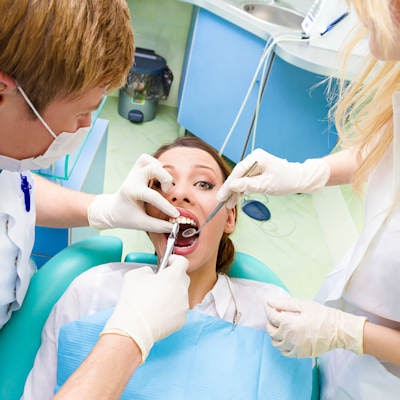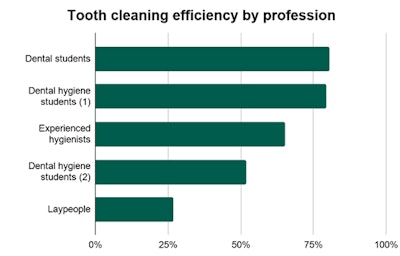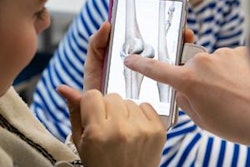
Dental students may be better at scaling and root planing than their hygiene counterparts, according to the findings of a new study. Dental students in Switzerland more effectively scaled a maxillary left canine model than both dental hygiene students and experienced hygienists.
The study authors, led by dental hygienist Deborah Hofer, were surprised that the dental students more effectively scaled the tooth model despite having significantly fewer training hours. They published their findings in the Swiss Dental Journal (February 26, 2019).
"Based on the results of this study, our hypothesis that periodontal instrumentation training time would be reflected in the students' end results when scaling/root planing a tooth ... must be rejected," wrote Hofer and her colleagues from the University of Zurich. "In fact, the dental students displayed scaling/root-planing skills comparable to the [dental hygiene] students who received 80 hours of training."
Education's role in clinical mastery
“Dental students displayed scaling/root-planing skills comparable to the [dental hygiene] students who received 80 hours of training.”
Dental school is rigorous, and dental students practice some clinical skills for a fraction of the time of dental hygiene students. Therefore, the researchers wondered how dental students' scaling and root-planing abilities fared against their colleagues who get more training time.
To find out, they recruited 70 study participants with varying educational and dental backgrounds:
- 34 dental students
- 20 dental hygiene students from two local schools
- 8 experienced dental hygienists
- 8 laypeople with no dental experience
The researchers asked the participants to use the hand instrument of their choice to scale and root plane a maxillary left canine on a dental model. The tooth models all had identical periodontal defects and were coated with black nail polish to simulate calculus.
After the participants cleaned the teeth for five minutes, the researchers scanned the models and evaluated them against a reference tooth. The dental students most effectively cleaned the tooth, followed by dental hygiene students at one school, experienced dental hygienists, then dental hygiene students at a second school.

The researchers attributed the relatively poor performance of the experienced dental hygienists to the differences between scaling and root-planing model teeth as opposed to actual teeth. However, the difference between the dental students and the various hygiene students was harder to explain.
They hypothesized the dental students could be more efficient learners, as they needed to excel at high school and university before entering dental school. Meanwhile, dental hygiene students go down a skill-based, apprentice pathway in Switzerland.
"The academic challenges previously mastered by the dental students, and an acquired ability for efficient learning and knowledge/skills transfer, may be one reason that they scored so high in this manual test despite very limited training time," the authors wrote. "However, this is only a suspicion, and it might well be that [dental hygiene] students, despite the discrepancy in their training times and level of proficiency displayed, could also reach levels of competency similar to those of dental students with an equally low number of training hours."
Interpret findings with caution
While the findings are interesting, a number of study shortcomings prevent them from being clinically relevant, according to the authors. First, the feel of human dentin and calculus varies from that of the model, which could explain why the experienced dental hygienists, who are used to working on patients, did not perform as well as some of the students who have only worked on models.
Furthermore, academic and professional education is different in Switzerland than other countries, including the U.S. Therefore, the results may not be applicable to U.S.-dental training programs.
Finally, the researchers did not account for educational differences between the dental school and two dental hygiene schools, including staff credentials and classroom diversity. They hope a follow-up study will look at some of these factors.
"Within the limitations of this study, we have shown that 8.5-hours of preclinical training was sufficient for dental students to remove concrement from an upper right maxillary canine to a level equal to or greater than [dental hygiene] students receiving 80 or 64 hours of preclinical training in scaling/root planing," the authors concluded. "These results point to the possibility of reducing the number of hours allocated to learning this preclinical skill by both dental and [dental hygiene] students and reallocating that time to other areas of the curriculum."



















